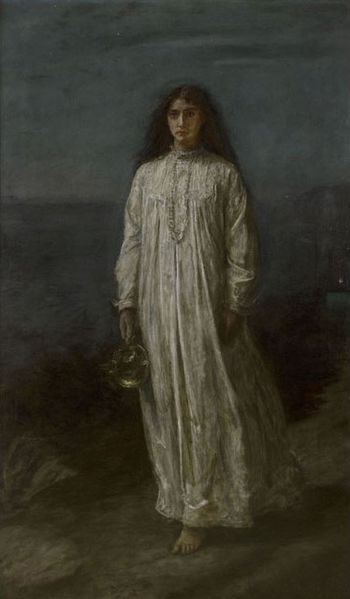Sleepwalking and night terrors belong to a category of parasomnias (sleep disorders) known as disorders of arousal or arousal disorders (ADs).
Disorders of arousal tend to run in families, and they are much more common in children than in adults.
Unlike dreams, which usually take place during REM sleep, sleepwalking episodes and night terrors occur during NREM sleep, usually during slow wave sleep (deep sleep – Stage N3). They may sometimes take place during Stage N2 sleep, which is a lighter stage of sleep.
Sleepwalking is also known as somnambulism.
When someone is sleepwalking, they appear to be awake. They may simply get up and walk around, or they may engage in more complex behaviors, such as eating or getting dressed. In some cases, sleepwalkers have driven cars while they were asleep.
 REM sleep behavior disorder is a parasomnia that can resemble sleepwalking.
REM sleep behavior disorder is a parasomnia that can resemble sleepwalking.
In both sleepwalking and REM sleep behavior disorder, the sleeper moves as though they were awake.
However, REM sleep behavior disorder occurs during REM sleep, while sleepwalking takes place during NREM sleep. Most sufferers of REM sleep behavior disorder are middle aged or elderly men, while sleepwalkers are usually children.
During a night terror (also known as sleep terror, or pavor nocturnus) the sufferer appears to awaken in a state of terror. They scream. Their pupils are dilated. They sweat, their heart beats rapidly and they hyperventilate. They may urinate on themselves. They will have broken out in a sweat.
Often, people who have night terrors have no memory of them afterwards. However, some people remember having terrifying hallucinations during these episodes. They may see and feel snakes or spiders crawling all over them. They may see monsters in the room with them.
Sometimes, they will sense that there is an evil creature near them. They may try to run away from the creature or they may try to fight it.
People often feel that they are being observed by an evil creature when they are experiencing episodes of sleep paralysis .
Night terrors are not the same as nightmares, which are frightening dreams that usually take place during REM sleep, as most dreams do.
Confusional arousal is another form of arousal disorder. During an episode of confusional arousal, the sufferer seems to awaken in a disoriented and agitated state. They may thrash around, cry or engage in combative behavior. An episode of confusional arousal can last from 5 to 40 minutes.
Disorders of arousal are caused by a problem with the transition from light sleep to deep sleep. When someone is experiencing a night terror, an episode of sleepwalking or a confusional arousal, an EEG will show brainwaves associated with deep sleep as well as brainwaves associated with being awake. They are in an altered state of consciousness – simultaneously awake and in a deep sleep.
A condition in which the brain experiences two states at once is known as a state dissociation. Lucid dreaming and sleep paralysis are other examples of state dissociations.
People who sleepwalk or who suffer from night terrors or confusional arousals often have difficulty remaining in a deep sleep.
Stress or lack of enough sleep can cause sleepwalking, confusional arousals and night terrors.
Medical conditions that cause frequent awakenings, such as such as sleep apnea, periodic limb movement disorder, asthma or acid reflux can also cause arousal disorders.
Fever, alcohol and certain drugs and medications are additional potential triggers of these parasomnias.
Benzodiazepine tranquilizers such as diazepam (Valium) can help to prevent night terrors, sleepwalking and confusional arousals. However, these conditions are not dangerous. Sufferers usually do not need to take medication as long as care is taken in advance to ensure that they cannot be injured, and that they cannot injure anyone else during an episode. For example, stairways can be gated to prevent falls down stairs and dangerous objects, such as knives or hammers, can be kept out of reach.
To learn more about the different stages of sleep see What Happens When We Sleep and Dream?.
